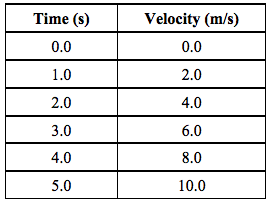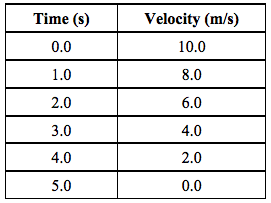There are four similar versions of this question. Two of the versions include:
Version 1:
The motion of an object is represented by velocity-time data.

Is this object speeding up, slowing down, or moving at a constant speed?
Is this object experiencing balanced forces or unbalanced forces?
Version 2:
The motion of an object is represented by velocity-time data.

Is this object speeding up, slowing down, or moving at a constant speed?
Is this object experiencing balanced forces or unbalanced forces?